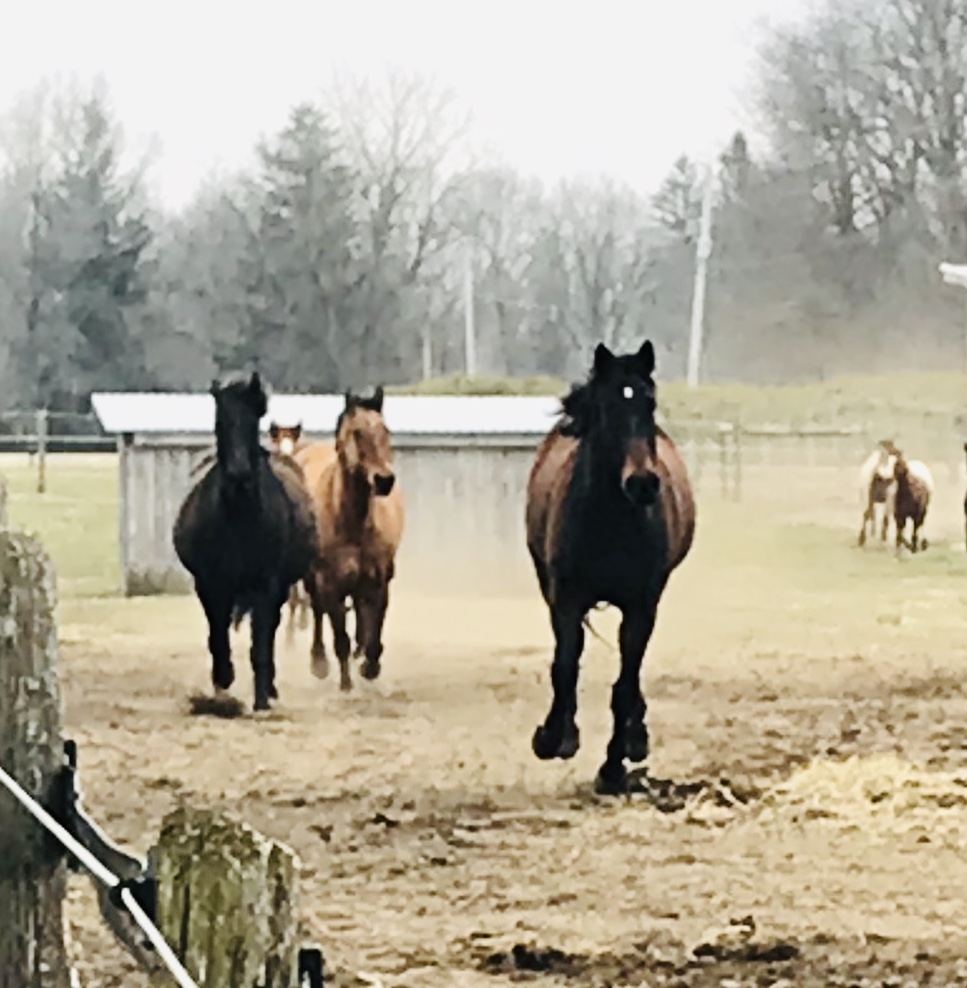The Power of Positive Reinforcement and Building a Relationship with Your Horse
There’s something universally satisfying about watching a horse respond eagerly when called. I remember a video from a few years ago: a Parelli student cracked a bull whip, and his horses came galloping from across a vast field, hopping into the trailer with enthusiasm. I shared it on social media, and Ian Leighton, the well-known Tasmanian horseman, commented, “Just fill the trailer with carrots and let them know.” To him, the whip’s crack simply meant the reward was ready.
And honestly, that’s exactly how it works. For a horse to respond with that kind of excitement, there has to be something in it for them.
I have two horses. One is more consistent about coming when called, but both generally respond well to a whistle. Part of it is their personalities—my younger horse is naturally more eager, and the older one doesn’t want to be left behind when they’re turned out together.
When the younger mare arrived from British Columbia as a two-year-old, she was underweight and had ulcers. She needed extra care, special grain, and daily medication. I created a routine around feeding time to establish structure and communication. I’d put her grain in the bowl but wouldn’t let her eat until she heard a specific whistle from me.
Now, when I say I “blocked” her, I don’t mean I physically restrained her. She was always free to move. I simply made a noise with a coiled rope on my leg whenever she reached for the food before the cue. If needed, I’d tap the rope to startle her slightly—a sound, not a strike.
It didn’t take long for her to make the connection. The whistle became her green light. Eventually, it meant more than just “mealtime”—it became a signal that I was offering something good.
But the real reason my horses come isn’t just food. It’s that they genuinely enjoy being around me. They like being groomed, worked with, and mentally engaged. Horses thrive on attention and stimulation, and since I’ve never handled them harshly, there’s no fear—only trust.
Sure, there are times when a lush pasture is more tempting than the barn. But overall, they come willingly. One of the best lessons I’ve learned is this: stop chasing your horse. Learn to draw them in instead. It’s such a simple idea that it’s often overlooked.
If you’ve spent any time around horses, you’ve likely seen someone unintentionally chasing their horse in circles, trying to catch them. Some horses quickly figure out that running means they get to stay out longer with their friends.
The key is to teach your horse to come to you. Just like in a round pen, use pressure and release—no flags necessary. When your horse looks at you, take a small step back. That little release encourages them to approach. When they do, reward them with plenty of scratches and praise. Don’t force the halter on them. Let them offer it to you. Mine now lower their noses right into it, ready for what comes next.

